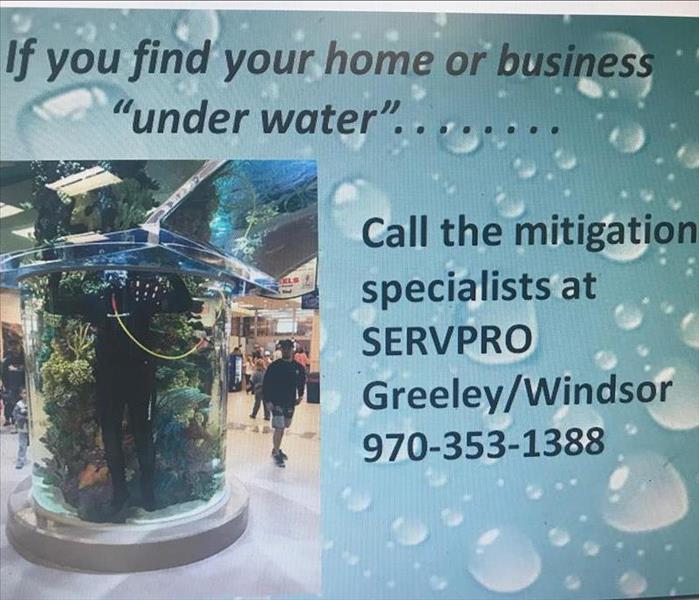10 Tips to Avoid Water Damage
11/3/2017 (Permalink)
Check the Outside of Your Home
1. Disconnect Hoses Standing water in a hose may freeze back into the pipe and create an ice block that, in a best-case scenario, stops your water flow. In the worst cases, it may bust your pipes and create damage to walls, floor and foundation.
2. Clean gutters and downspouts Clean your gutters at least twice a year to avoid blockage and ice dams. Standing water can cause damage to your gutters and roof, and unmanaged overflow may create puddles that could damage your foundation. Don't forget to clean downspouts to ensure water can flow through, and secure downspouts so that they point away from the home.
3. Maintain trees and vegetation Thriving shrubs can be a beautiful thing — except when their roots wrap around your pipes and break them. That's why it's important to minimize landscaping near utility pipes or, if necessary, remove trees and shrubs that have become too big.
Interior Measure to Prevent Water Damage
4. Know your water main Know the location of your water main, and shut it off if you leave for an extended amount of time. If no water goes in to the house, chances are no faucet drips or toilets can wreak havoc on your home while you're away
5. Check appliances Check and maintain your home appliances regularly for leaks, according to manufacturer's directions.
6. Investigate leaks right away and fix promptly If you opt to ignore moisture damage or postpone making the necessary repairs, be prepared to experience mold, mildew, dry rot, or even structural damage to your home. Keep in mind that homeowner's insurance provides coverage for damage that is sudden and accidental. Damage that results from lack of maintenance is not covered on a standard homeowners insurance policy.
7. Upgrade washing machine hoses Old, brittle or leaky washing machine hoses are among the most frequent causes of water loss for homeowners. Replace yours regularly to avoid a mighty mess and expensive damage
8. Install water detection devices A water detector is a small electronic device that sounds an alarm when its sensor comes in contact with moisture. Its main benefit is that it detects low moisture levels or slow leaks that often go unnoticed. Install it near water heaters, sump pumps, washing machines, dishwashers and toilets to prevent extensive damage and mold growth.
9. Check your water pressure If the water pressure to your home is set too high, pipes and hoses may fail under the pressure. Buy a water pressure gauge at a local hardware store, attach it to an outside faucet, and turn the faucet to full force. The gauge will give you a reading of the home’s water pressure. Typical residential water systems are designed for water pressure of 40 to 70 psi. If your home’s water pressure exceeds 100 psi, install a pressure regulator (which is available at hardware stores as well.)
10. Monitor your water bill Sometimes, the only way you know that water is leaking is taking a closer look at your water bill. If your usage jumps significantly from one month to the next without explanation, put your "water detective hat" on. Is there a leak in your crawlspace? Or, is it a pipe in your front yard? Don't leave mystery leaks unattended!



 24/7 Emergency Service
24/7 Emergency Service
